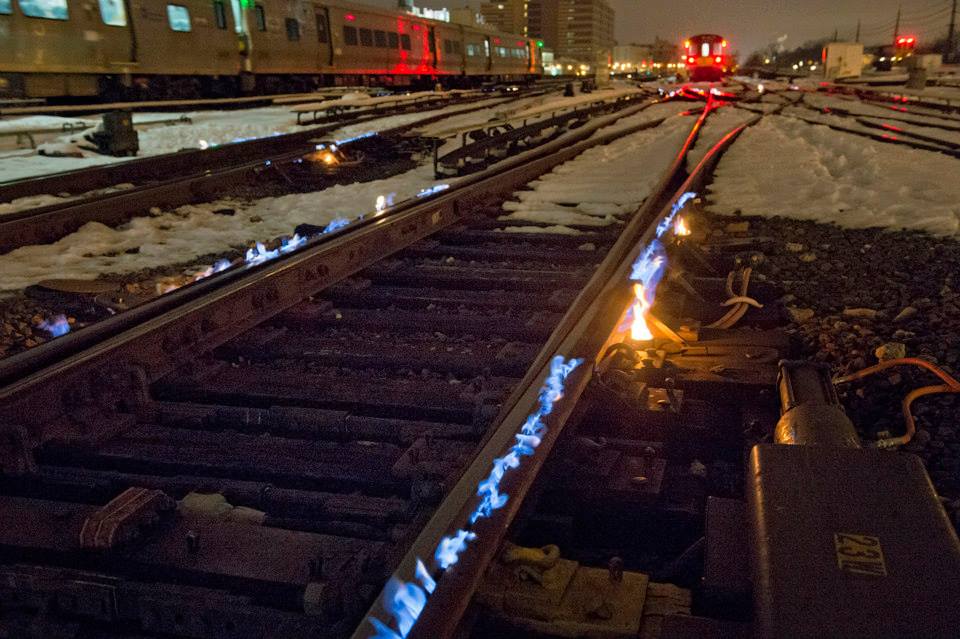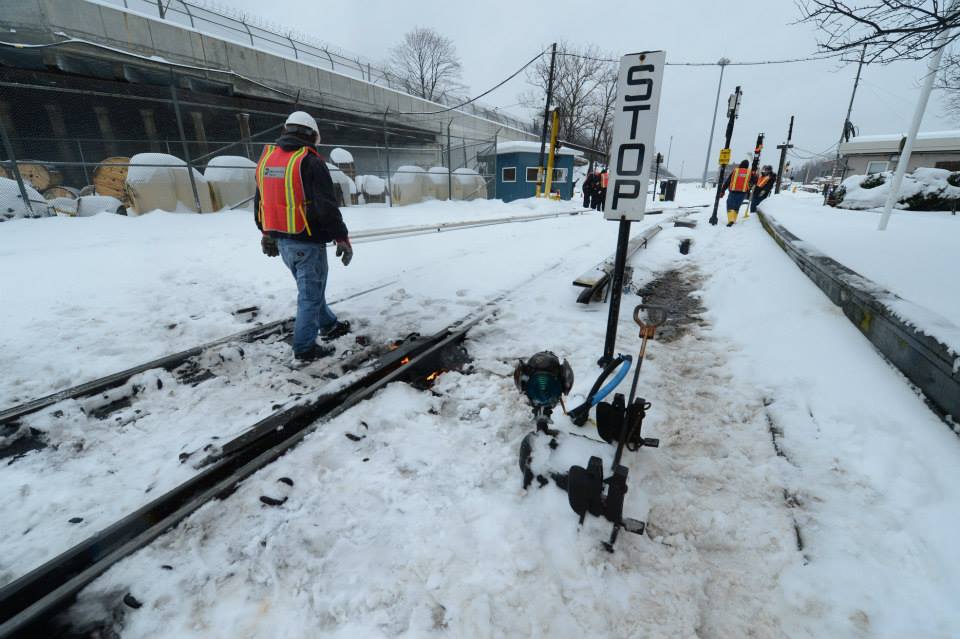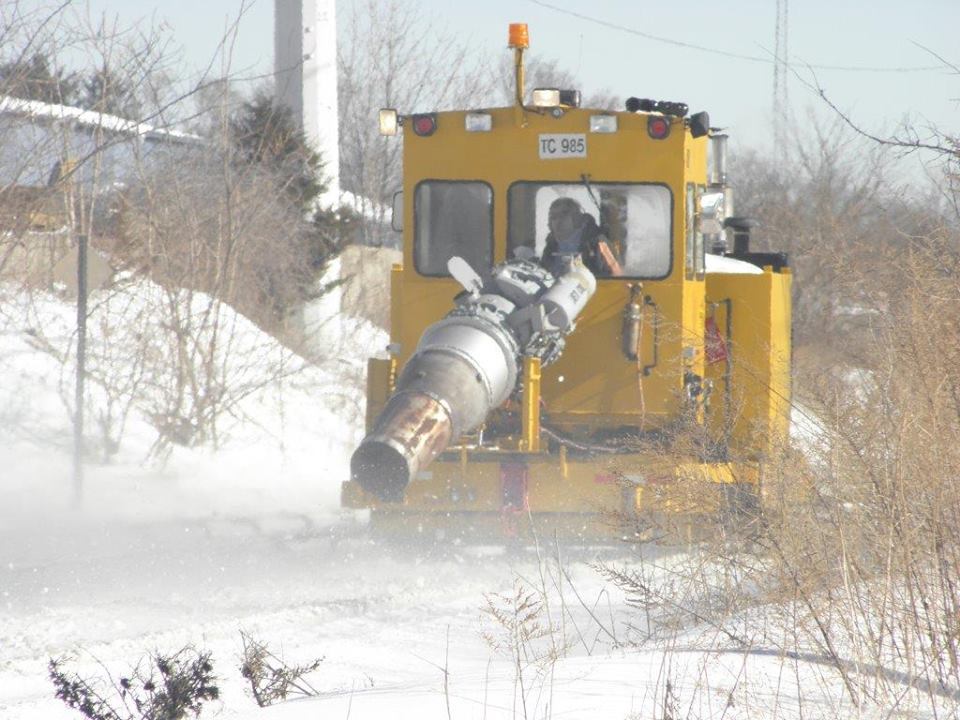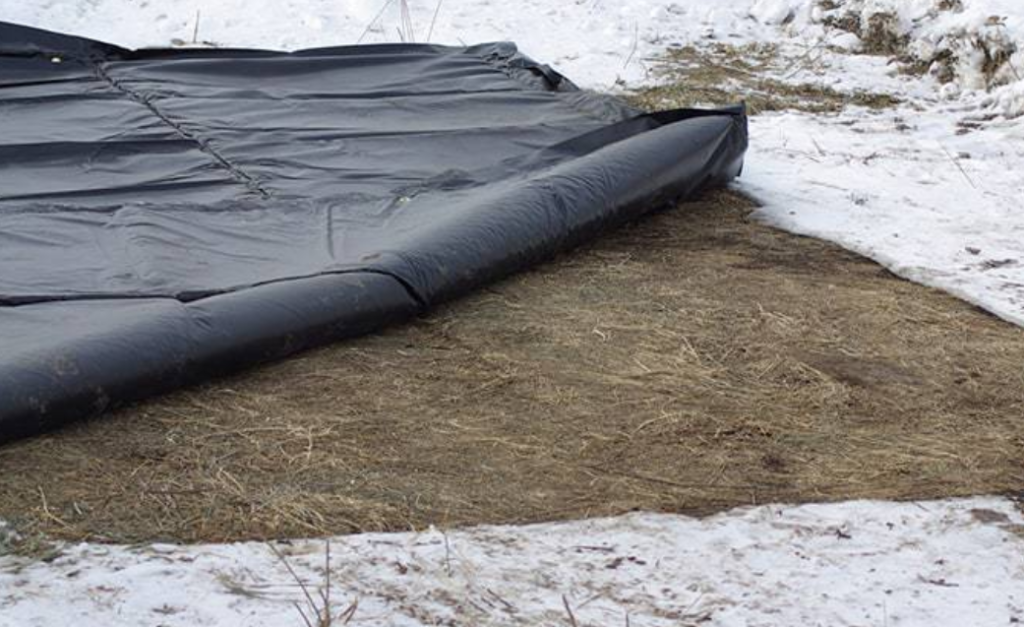Winter has a habit of freezing progress in its tracks. Snow and ice can make roads unsafe to travel on, bury runways, and cause fuels to thicken. Even railroads can’t escape the damage done by Jack Frost.
In fact, railroads have to deal with some of the most dangerous effects of snow and ice. Track switches that freeze up lead to costly delays, as well as the potential for derailments. Keeping tracks thawed and switches ice-free is critical for operating a safe and efficient railroad.
The Long Island Railroad uses a variety of methods to keep their switches from freezing, even by setting their rails on fire. According to the Long Island Railroad blog, electricity, natural gas, kerosene oil and a hydrocarbon oil called Hexane, are used every winter across the railway to ensure switches are thawed and operational.

These days on the LIRR, most switch heaters are electric. They are made up of high resistance metal bars that are bolted to the sides of the running rail. One end is grounded to the running rail and the other end is tied to the third rail through a knife switch in a little box. Most are activated onsite, but there are some that are remote controlled.

The gas powered switch heaters are older: vestiges from an age when electric power was expensive and unreliable and gas was cheap. The gas powered heaters would keep a place like Jamaica open even if electric power failed. Today the gas heaters use natural gas that is provided by the utility companies (at one time they used manufactured gas from coal). The gas to these heaters is supplied by a one-and-a-half inch pipe with a globe valve down in a pit near the switch. A mechanic from the LIRR’s Buildings and Bridges department turns on the gas and lights it with a fuse. Then the winds blow it out.

These days it is the gas heaters which are less than reliable; they blow out in high wind and have to be re-lit (a tricky task in the middle of rush hour).
The LIRR still also uses the really old “switch pots” which are filled with kerosene and burn a wick under the switch points. These are maintained by the track department. Trackmen work through the storms filling and lighting these.
And no story about switches and ice can be complete without mentioning “switch oil.” To thaw out frozen switches, trackmen use Hexane, a hydrocarbon oil that is dumped along the rail from a long snouted can that looks like a flower watering can. Another trackman follows the first with a blazing broom that was soaked in the stuff which he uses to light up the oiled switches. The goop burns for fifteen minutes, effectively de-icing the frozen switch.

There is an easier way, of course, to keep rail switches thawed during winter storms. Introducing: Powerblanket Extra-Hot Ground Thawing Blankets. These provide a cheaper, more efficient method to prevent delays that come from iced tracks.
Simply plug the blanket into an electrical source, and the thawing begins. With a preset of 150 ͒ F, the rapid thaw blanket is a maintenance-free heating solution that reduces downtime, eliminates headaches associated with frozen ground, and saves money.
Reliance on manual labor or antiquated heating methods can stay where they belong: in the past. Use the Extra-Hot Ground Thawing Blankets to keep rail switches thawed, passengers safe, and trains on time.


